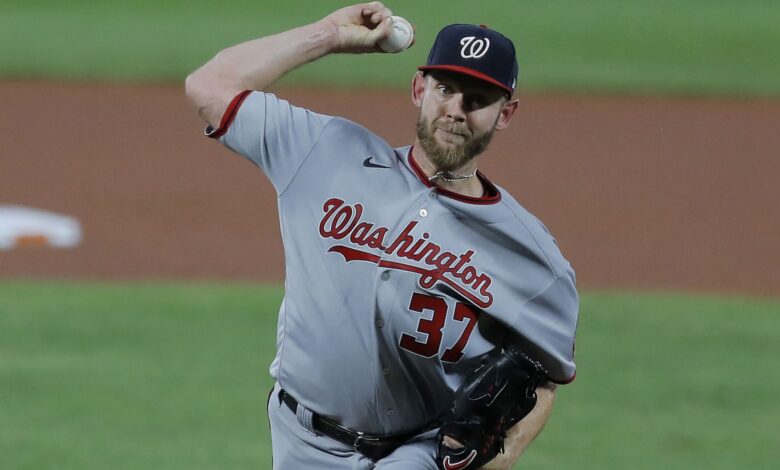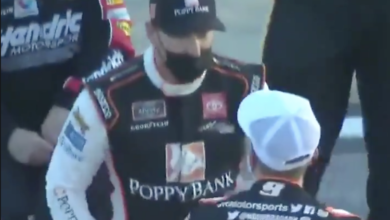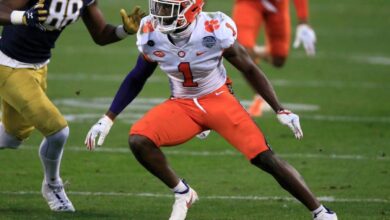Analyzing the most polarizing pitchers

Last week, we talked about polarizing fantasy baseball hitters and offered pros, cons, and takeaways. This week, we’ll tackle some of the pitchers.
Fret not if you disagree — that’s why we have a game.
The polarizing issue with deGrom isn’t a matter of talent — he’s already bagged two Cy Young Awards and he ran third last year. The question is how early to draft him. I had deGrom in the middle of my first round for a while this spring — above the fold, you might say — but in recent weeks I’ve come around to the idea that you can’t take him too early. He’s the No. 1 player on my board currently, and barring an injury before Opening Day, he’ll stay there. (Contrast this to his Yahoo ADP, which is an eyelash under 7.)
This is the best Mets team we’ve seen in at least five years; deGrom’s bad luck with wins is likely to sort itself out. He’s the rare 2021 pitcher who might have a shot at 200 or more innings. The National League seems unlikely to have a DH this year, a key distinction. And deGrom has already been through the Tommy John cycle; he’s been pre-disastered, as the great Cory Schwartz might say.
Although starting pitchers only contribute to four of the 10 stats we collect in the standard 5×5 format, elite pitchers generally carry the most standings impact (in large part because we use fewer pitchers). If you could get one magic answer in advance of the season, you’d want to know who the No. 1 pitcher is. The three-year average for deGrom spits out a tidy 2.10 ERA and a microscopic 0.94 WHIP. If he’s anywhere close to those numbers, you’ll regret letting him pass.
TAKEAWAY: Worth considering first overall because a star pitcher usually offers more standings juice than a star hitter, as counterintuitive as that might seem.
I understand why Hendricks is an automatic no-fly zone for many fantasy managers and analysts. His average fastball lives in the 80s, while his career K/9 rests at 7.6. In a world where strikeouts dominate (if not smother) baseball, Hendricks doesn’t rack up enough of them. Or does he?
There’s a counterbalance to Hendricks’ modest strikeout rate; he hardly walks anyone. He’s under 2 BB/9 for his career, and last year he issued a piddly eight walks (one intentional) over 81.1 innings. This plus-plus control allows Hendricks to work deeper in games, and it helps him to compile strikeouts through volume. His average strikeout projection hovers around 150, certainly useful in the innings-capped world we navigate through.
TAKEAWAY: Hendricks is often underrated because his stuff isn’t jaw-dropping, but his control is elite and innings are a currency in 2021. In many rooms, he’ll be undervalued. Volume is a good thing.
Although his floor and upside aren’t as high, Keuchel stands as the AL’s best answer to Hendricks. Keuchel has modest strikeout numbers, but he helps himself by doing a host of other things well. He controls the running game, induces ground balls and weak contact, and fields his position expertly. This allows him to get away with a fastball in the 80s and a strikeout rate that makes Hendricks look like Nolan Ryan. BetMGM has the White Sox ticketed for 90-plus wins; I want to ride with this roster.
TAKEAWAY: Throw out the radar gun with Keuchel and appreciate the little things he does well. He’s tied to a strong roster and, again, innings pitched are a currency. He’s a solid investment for the second half of your staff and a decent value at 187 in Yahoo ADP. It takes subtlety to appreciate him, and that’s why the profit potential exists.
Although his walk and strikeout rates dipped in 2020, Marquez nonetheless fashioned a career-low 3.75 ERA and led the National League in innings pitched. The ERA got messy at home (5.68), but he was a 2.06 man over seven road starts.
Occasionally I’ll hear someone try to talk themselves into a Colorado pitcher having sustained success, but it almost never happens. Ubaldo Jimenez is the best we’ve seen, and his run was only three years — and over a decade ago. Even if you view Marquez as a road-only piece, consider that his career road ERA is merely 3.51 — solid, but likely not worth it as a part-timer. And don’t forget, his road turns include dangerous stops in Los Angeles and San Diego, where two stacked offenses await.
[Draft Rankings: C | 1B | 2B | SS | 3B | OF | SP | RP]
TAKEAWAY: Marquez can blow up in any home turn — it’s just gravity — and there are two formidable opponents ready to mess up his road starts. Occam’s Razor is your friend; the simplest explanation is generally the best. Don’t walk yourself into Marquez.
Stephen Strasburg, Nationals
Let’s be fair, Strasburg’s had a strong career. He’s made three All-Star teams, charted in three Cy Young races (3rd, 5th, 9th), bagged a strikeout title. He led the NL in wins two years back.
But we always wonder how many innings Strasburg will give us — that’s where all those “Stressburg” tweets come from. He’s missed a chunk of starts in seven of the last 10 years. Sure, anyone who steps onto a pitcher’s mound has inherent injury risk, but that doesn’t mean the risk is uniform for every player. When someone has this type of track record, I’d posit the risk should be heavily baked into his ADP; alas, in most rooms, I find someone more Strasburg-optimistic than I am.
TAKEAWAY: Any pitcher carries obvious injury risk, but Strasburg’s medical history makes me unlikely to grab him so long as he’s seen as a Top 70 pick (Yahoo and NFBC returns slot him as such).
Robbie Ray, Blue Jays, and Matthew Boyd, Tigers
Ray had a frustrating 2019 season and it turned into a torch job last year (6.62 ERA, 1.88 WHIP — those stats look like misprints). Boyd also had a bottoming out (6.71 ERA), and his career ERA is a shade over 5. That’s why they’re both around ADP 234 in Yahoo drafts.
But be mindful of how the drafting objective changes in the late rounds. Floor flies out the window, especially at pitcher; any arm viewed as safe is long gone once we hit the 200s. All we’re trying to find with late pitcher picks is plausible upside, and Ray and Boyd both offer that. Ray’s posted three 200-plus strikeout seasons and was an All-Star in 2017 (2.89 ERA, 1.15 WHIP). With reports of a notable velocity jump, I’m interested again. Boyd piled up 238 strikeouts two years ago and his fly-ball tilt might play nicer in 2021, with a less-juicy ball expected to be in play.
TAKEAWAY: Ray and Boyd have zero floor and have to be judiciously drafted and handled on your roster; heck, maybe you shouldn’t put them on the same fantasy roster. But late-round picks need to be upside-driven, and they both click that box.





